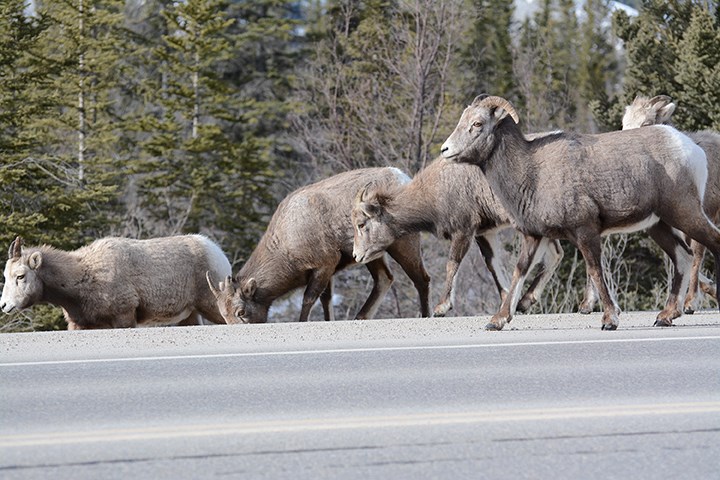
Joanne McQuarrie, Local Journalism Initiative Reporter | [email protected]
Seeing wildlife in Jasper National Park can be a thrilling experience, but stopping on a roadway to get a closer look can be hazardous.
Const. Chris McSavage with the Jasper RCMP detachment noted in an email that stopping on roadways was a “big safety concern.”
“There have been numerous collisions that have taken place a result of vehicles stopping in the middle of the road to view wildlife,” he said.
“Several of these collisions have also resulted in severe injuries and loss of life.”
Last year, 121 animals were killed by vehicles within Jasper National Park.
“Drivers should not be stopping in the roadway to view wildlife, but if they do intend to take photos, they should pull over to the shoulder of the highway as far as they can to ensure their safety as well as the safety of other vehicles,” McSavage said.
McSavage said there are several tickets and fines that could be levied against a driver who stops in the middle of the road for such an occasion.
Wildlife viewing restrictions
To help ensure the safety of animals and people, Parks Canada designates roadside wildlife viewing as restricted from Jan. 1 to Dec. 21.
Unless inside a legally positioned motor vehicle, no one is allowed to be within 100 metres of a bear, cougar or wolf, nor can they be within 30 metres of any elk, moose, caribou, sheep or goat.
Parks Canada also prohibits people from being within any distance that interferes with the movement of wildlife, or any distance that creates or contributes to a potentially hazardous condition or situation.
Even when an encounter with wildlife is inadvertent or accidental, people are asked to do their best to keep their distance.
These restrictions don’t apply to a superintendent, park warden, peace officer or any other person authorized by the superintendent to carry out their duties.
The restrictions apply to all areas within 200 metres of any road, highway or place within a park intended for use by the public for the passage or parking of vehicles.
The goal of the restrictions is to reduce the likelihood of motor vehicle collisions, ensure visitor safety and protect wildlife from disturbance and stress.
Restrictions also provide Parks Canada staff with the tools needed to safely manage dynamic wildlife viewing opportunities, reduce or prevent habituation of wildlife and reduce the formation of large groups that could increase the spread of COVID-19.
Parks Canada said along with the opportunity to observe wildlife as they go about their natural lives is a fascinating experience but at the same time, there is a responsibility to treat wildlife with respect.
With calving season soon approaching and expected to last from May to June, visitors should be wary as female elk will aggressively defend and protect their young.
Parks Canada encourages visitors to slow down, obey speed limits, use hazard lights to alert others, pull over only where safe to do so and not stop in driving lanes.
Visitors should observe, take photographs, and continue on, and they should leave immediately if a traffic jam develops.



